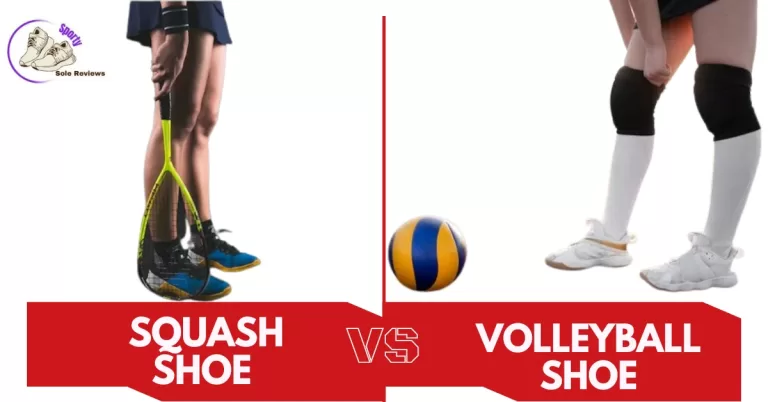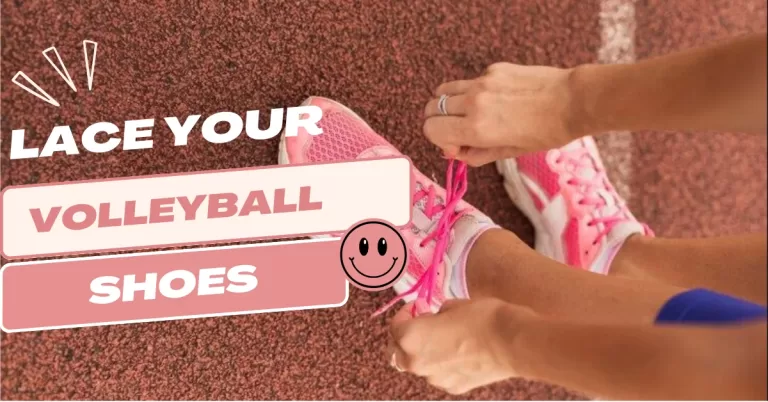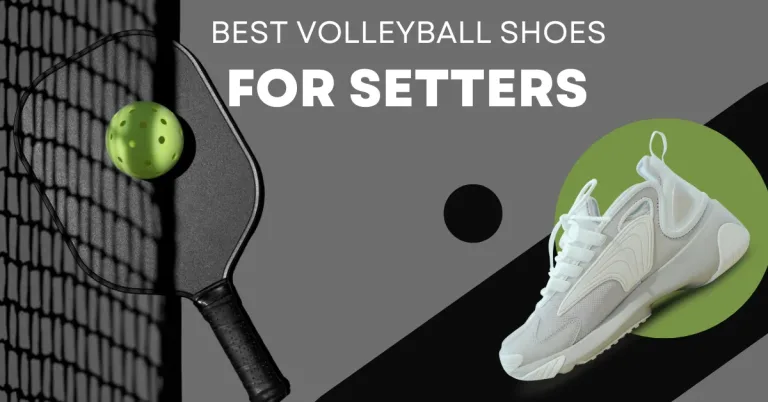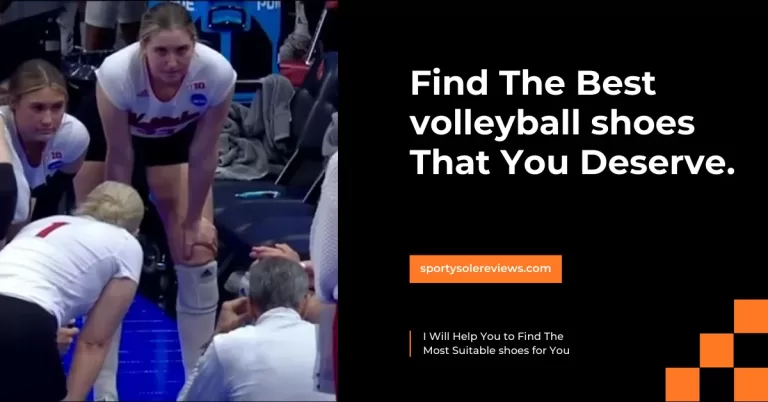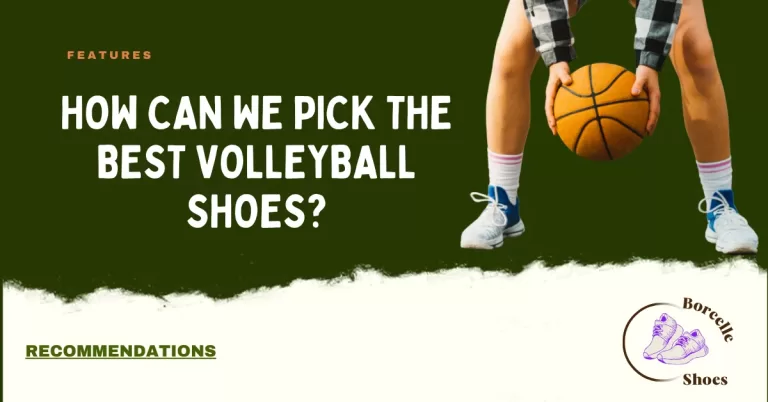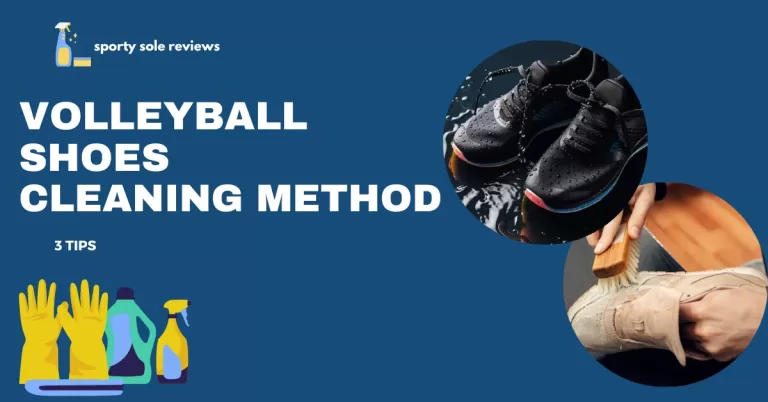Ace the volleyball shoe replacement timing! Kick Up Your Game:
The significance of well-maintained volleyball shoes cannot be overstated. They directly impact performance and injury risks. Contrary to common misconceptions, shoe lifespan isn’t just about appearance. Factors like cushioning and support matter too. For professional players with intense daily training, changing shoes every 3-6 months is advised. Intermediate players, engaging in regular play, should consider replacement every 6-12 months. Prioritizing shoe condition is vital for all levels, ensuring top-notch performance and safety on the court. I tell you about how often volleyball shoe replacements for players at different levels.
Factors Affecting Shoe Lifespan
Volleyball shoes, like any sports footwear, have a limited lifespan determined by several key factors that can significantly impact their durability.
1. Frequency and Intensity of Play
The more frequently and intensely volleyball shoes are used, the faster they will wear out. Regular players engaging in intense matches, training sessions, or tournaments may need to replace their shoes more often than occasional players.
2. Playing Surface and Court Conditions
The court surface plays a crucial role in determining shoe lifespan. Abrasive surfaces, such as outdoor courts or rough indoor floors, can accelerate the deterioration of shoe materials, leading to quicker wear and tear.
3. Individual Biomechanics and Foot Type
Each player’s biomechanics and foot type are unique, influencing how their shoes wear over time. Factors like foot pronation, arch height, and gait pattern can affect the distribution of pressure on the shoes, leading to uneven wear and potential discomfort.
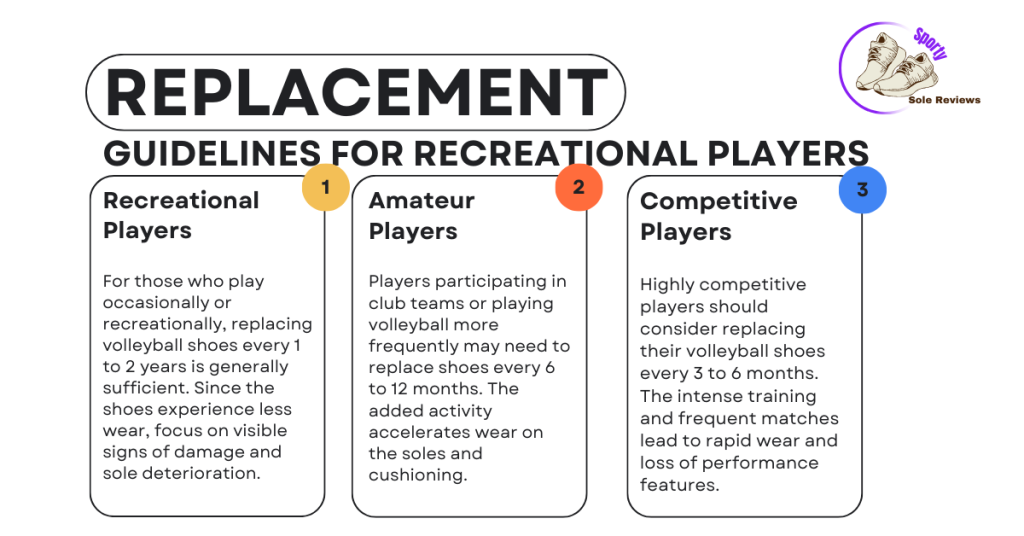
Signs of Wear and Tear of shoes
To ensure optimal performance, safety, and volleyball shoe fitness on the volleyball court, it’s crucial to recognize the signs of wear and tear in your volleyball shoe replacement.
1. Examining the Outsole for Tread Wear and Damage
The outsole is the first line of defense against the impact of the court surface. Check for worn-out treads and any signs of damage, such as cracks or peeling. A degraded outsole can compromise traction and stability, affecting your game and increasing the risk of injuries.
2. Evaluating Midsole Cushioning and Responsiveness
The midsole is responsible for providing cushioning and shock absorption. Over time, it may lose its responsiveness and support due to repeated impacts. Press down on the midsole to check if it still springs back or if it feels flat and compressed. Diminished cushioning can lead to discomfort and potential stress on your joints.
3. Inspecting the Upper for Tears, Creases, and Stretching
The upper part of the shoe is essential for support and stability. Look for tears, creases, or stretching in the material. A compromised upper can affect your foot’s alignment, leading to reduced performance and potential injuries.
Volleyball shoe Replacement Guidelines for Recreational Players
People who play volleyball just sometimes, for fun, think about how long their shoes will last differently than people who play volleyball regularly.
Occasional Players and Their Shoe Lifespan
If you only play volleyball sometimes for fun, how long your shoes last usually depends on how much time has passed rather than how much you’ve used them. If you play volleyball only a few times a month or just with friends, your shoes might not get as worn out as those who play a lot.
Indications for Replacing Shoes
Even if you play volleyball just for fun and not very often, there are still signs that show when you might need new shoes. Check the bottom of your shoes for parts that are worn out and the middle part for any loss of softness and bounciness. Also, look at the top part for rips or if it’s getting too loose, which could affect how stable and supported your feet are.
Replacing Shoes for Intermediate Players
Intermediate players who engage in regular training and league participation require shoes that can withstand the demands of their active volleyball schedule.
Regular Training and League Participation
Intermediate players often have more frequent training sessions and participate in leagues or organized competitions. This increased level of play puts more strain on their shoes compared to recreational players. As a result, their shoes may experience greater wear and tear.
Monitoring Wear and Tear for Optimal Performance
Intermediate players should actively monitor the condition of their volleyball shoe replacement to ensure optimal performance. Regularly inspecting the outsole for tread wear, checking the midsole for cushioning responsiveness, and evaluating the upper for tears or stretching are essential practices. Identifying signs of deterioration helps determine the right time for replacement.
Conclusion
In the grand play of sports, precision resonates profoundly. It’s not just about replacing shoes; it’s about replacing doubts. Ensuring optimal performance isn’t a distant goal; it’s the heartbeat of victory. And amidst this pursuit, finding the sweet spot is the true art – a balance between performance, comfort, and longevity. As the court witnesses the game’s choreography, the spotlight shifts to a pivotal question: How Often Should We Volleyball Shoe Replacement For Different Levels Of Play? The answer, a crescendo of strategy and finesse, orchestrates a symphony of success.
How often should I replace my volleyball court shoes?
The frequency of replacement depends on factors like usage, intensity of play, and court conditions. Regular players may need to replace shoes more frequently than occasional players.
Can I use the same shoes for indoor and outdoor volleyball?
It’s not recommended. Outdoor courts are more abrasive, causing faster wear. It’s best to use separate shoes for indoor and outdoor play to prolong their lifespan.
What are the signs in my volleyball shoe replacement?
Look for worn-out treads on the outsole, loss of cushioning in the midsole, and tears or stretching in the upper. These signs indicate it’s time for new shoes.
Should I prioritise stability or cushioning in volleyball shoes?
Both stability and cushioning are important. Opt for shoes that strike a balance between the two to provide optimal support and comfort during play.
How do I choose the right volleyball shoes for my foot type?
Consider your foot pronation, arch height, and gait pattern. Seek shoes that cater to your specific foot mechanics to ensure a proper fit and enhance performance.


